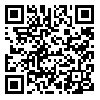Volume 8, Issue 3 (10-2018)
IJOCE 2018, 8(3): 469-488 |
Back to browse issues page
Download citation:
BibTeX | RIS | EndNote | Medlars | ProCite | Reference Manager | RefWorks
Send citation to:



BibTeX | RIS | EndNote | Medlars | ProCite | Reference Manager | RefWorks
Send citation to:
Mohebbi M, Alesh Nabidoust N. THE CAPABILITY OF OPTIMAL SINGLE AND MULTIPLE TUNED MASS DAMPERS UNDER MULTIPLE EARTHQUAKES. IJOCE 2018; 8 (3) :469-488
URL: http://ijoce.iust.ac.ir/article-1-357-en.html
URL: http://ijoce.iust.ac.ir/article-1-357-en.html
Abstract: (19138 Views)
The main focus of this research has been to investigate the effectiveness of optimal single and multiple Tuned Mass Dampers (TMDs) under different ground motions as well as to develop a procedure for designing TMD and MTMDs to be effective under multiple records. To determine the parameters of TMD and MTMDs under multiple records various scenarios have been suggested and their efficiency has been assessed. For numerical simulations, a ten-story linear shear building frame subjected to 12 real earthquakes as well as a filtered white noise record and optimum parameters of TMDs and MTMDs have been determined by solving an optimization problem using genetic algorithm (GA). The results show that when designing optimal TMD and MTMD under a specific ground motion, using the optimization procedure leads to achieve the best performance while the characteristics of the design earthquake strongly affects the performance of TMDs. Furthermore, it has been found that TMDs and MTMDs designed using only one earthquake as the design record have not worked successfully under multiple ground motions. For determining the parameters of TMDs to be effective under multiple records it has been suggested to use the mean of optimal TMDs parameters obtained using each of the design records.
Keywords: tuned mass damper (TMD), multiple tuned mass damper (MTMD), design records, optimization, multiple records.
Type of Study: Research |
Subject:
Optimal design
Received: 2017/12/20 | Accepted: 2017/12/20 | Published: 2017/12/20
Received: 2017/12/20 | Accepted: 2017/12/20 | Published: 2017/12/20
| Rights and permissions | |
 | This work is licensed under a Creative Commons Attribution-NonCommercial 4.0 International License. |





